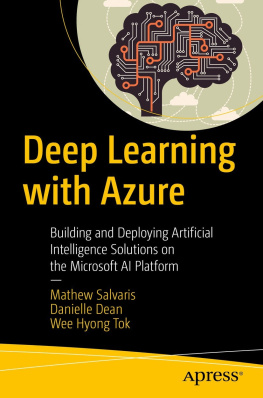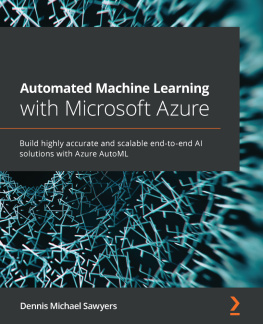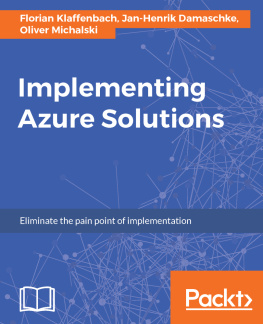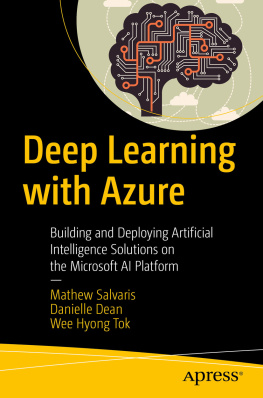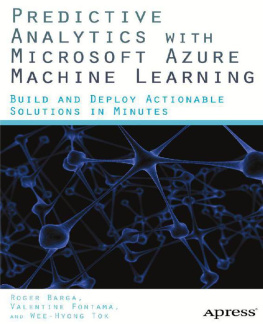1. Introduction to Artificial Intelligence
Intelligence can be defined in many ways, from the ability to learn to deal with new situations to the ability to make the right decisions according to some criterion, for example (Bengio, 2010). Standard computers and even basic calculators can be thought to be intelligent in some ways, as they can compute an outcome based on human-programed rules. Computers are extremely useful for mundane operations such as arithmetic calculations , and the speed and scale at which they can tackle these problems has greatly increased over time.
However, many tasks that come naturally to humans such as perception and control tasksare extremely difficult to write formal rules or programs for a machine to execute. Often it is hard to codify all the knowledge and thought processes behind information processing and decision making into a formal program on which a machine can then act. Humans, on the other hand, over their lifetime can gather vast amounts of data through observation and experience that enables this human level of intelligence, abstract thinking, and decision making.
Artificial intelligence (AI) is a broad field of study encompassing this complex problem solving and the human-like ability to sense, act, and reason. One goal of AI can be to create smart machines that think and act like humans, with the ability to simulate intelligence and produce decisions through processes in a similar manner to human reasoning. This field encompasses approaches ranging from prescriptive, immutable algorithms for tasks previously performed only by intelligent beings (e.g., arithmetic calculators) to attempts to enable machines to learn, respond to feedback, and engage in abstract thought.
AI is transforming the world around us at an ever-increasing pace, including personalized experiences , smart personal assistants in devices like our phones, speech-to-speech translation , automated support agents, precision medicine, and autonomous driving cars that can recognize objects and respond appropriately, to name just a few. Even through products such as search or Microsoft Office 365, AI is having a useful impact on most peoples day-to-day lives. Technology has come a long way from the early days of the Internet in terms of how humans interact with computers. There is an increasing expectation that humans should be getting information in intelligent ways, and be able to interact with devices that hold access to information in natural ways. Creating these types of experiences often requires some type of AI.
AI is going to disrupt every single business appwhether an industry vertical like banking, retail and health care, or a horizontal business process like sales, marketing and customer support.
Harry Shum, Microsoft Executive VP, AI and Research
Of course, with the rise of AI and intelligent systems comes potential drawbacks and concerns. Despite potential transformative experiences and solutions based on AI, there are ethical issues that are important for both the creators and users of AI to recognize. Technology will continue to shape the workforce and economy as it has in the past as AI automates some tasks and augments human capabilities in others (Brynjolfsson & Mitchell, 2017). Media portrayals often pit the human versus the machine, and this is exacerbated through stories of computers playing games, especially against humans. Computers have been able to beat humans in games such as chess for decades, but with recent AI advances, computers can also surpass human abilities in more sophisticated games where brute force computing power isnt practical, such as the abstract board game Go or the video arcade game Ms. Pac-Man (Silver et al., 2016; van Seijen, 2017).
However, we believe that the discussion should not be framed in a binary of human versus machine. It is important to develop AI that augments human capabilities, as humans hold creativity, empathy, emotion, physicality, and insight that can be combined with AI and the power of machines to quickly reason over large data to solve some of societys biggest problems (Nadella, 2016) . After all, there is an abundance of information in the world today from which we can learn, but we are constrained by our human capability to absorb this information in the constraints of time. AI can help us achieve more in the time that we have.
Of course, safeguards will need to be put in place as algorithms will not always get the answer right. Then there is debate over what right even means. Although computers are thought to be neutral and thus embody the value of being inclusive and respectful to everyone, there can be hidden biases in data and the code programmed into AI systems, potentially leading to unfair and inaccurate inferences. Data and privacy concerns also need to be addressed during the development and improvement of AI systems. The platforms used for AI development thus need to have protections for privacy, transparency, and security built into them. Although we are far from artificial general intelligence and from the many portrayals of a loss of control of AI systems due to computers with superintelligence from popular culture and science fiction works, these types of legal and ethical implications of AI are crucial to consider.
We are still in the early days of the infusion of AI in our lives, but a large transformation is already underway. Especially due to advances in the last few years and the availability of platforms such as the Microsoft AI Platform, upon which one can easily build AI applications, we will see many innovations and much change to come. Ultimately, that change will mean more situations where humans and machines are working together in a more seamless way. Just imagine whats possible when we put our efforts toward using AI to solve some of the worlds greatest challenges such as disease, poverty, and climate change (Nadella, 2017).
Microsoft and AI
AI is central to Microsofts strategy to build best-in-class platforms and productivity services for an intelligent cloud and an intelligent edge infused with artificial intelligence (AI) (Microsoft Form 10-K, 2017). Although this statement is new, AI is not new to Microsoft. Founder Bill Gates believed that computers would one day be able to see, hear, and understand humans and their environment. Microsoft Research was formed in 1991 to tackle some of the foundational AI challenges; many of the original solutions are now embedded within Office 365, Skype, Cortana, Bing, and Xbox. These are just some of the Microsoft products that are infused with many different applications of AI. Even in 1997, Hotmail with automated junk mail filtering was built on a type of AI system with classifications that improve with data over time.
Lets look at just a few specific examples today. A plug-in available for PowerPoint called Presentation Translator displays subtitles directly on a PowerPoint presentation as you talk in any of more than 60 supported languages; you can also directly translate the text on the slides to save a version of your presentation in another language, thanks to speech recognition and natural language processing technologies (Microsoft Translator, 2017). SwiftKey is a smart keyboard used by more than 300 million Android and iOS devices that has learned from 10 trillion keystrokes on the next word you want to type and saved 100,000 years of time (Microsoft News, 2017).

